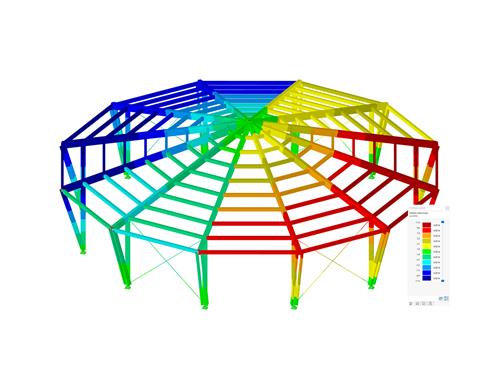The frame & truss analysis software RSTAB allows for the modeling and calculation of general frame, beam, and truss structures. The powerful computation kernel enables linear or nonlinear determination of internal forces, deformations, and support reactions.
This user manual describes the modeling, calculation, and result evaluation features related to the structural analysis.
RFEM dialog boxes are shown for images of dialog boxes that are identical to RFEM.
The Masonry Design add-on activates special material models that have been developed for calculating masonry structures. This allows you to consider the masonry material in an FEM analysis.
In the calculation, internal forces and deformations are determined on the basis of stress-strain lines derived from the standardization. This means that the design is based on the standard.
This manual describes the Masonry Design add-on for the RFEM 6 program.
The Geotechnical Analysis add-on allows for a finite element analysis of soil solids with the suitable material laws in RFEM 6. By integrating Geotechnical Analysis into the FEA software, the soil-structure interaction can be represented computationally completely in the overall model.
With the Geotechnical Analysis, it is possible to determine the stresses and deformations of a soil solid. The input and result evaluation are integrated in the user interface of the RFEM 6 program.
This manual describes the Geotechnical Analysis add-on for the RFEM 6 program.
The add-on modules RF-LIMITS (for RFEM) and LIMITS (for RSTAB) provide a comprehensive overview about the utilization of connecting elements or compliance with internal forces and deformations in the entire model. This manual describes the add-on modules of both main programs under the name "RF-/LIMITS".
Basically, RF/-LIMITS does not depend on any standard. However, you can use the specifications of the timber standards EN 1995 and DIN 1052 for your design checks.



